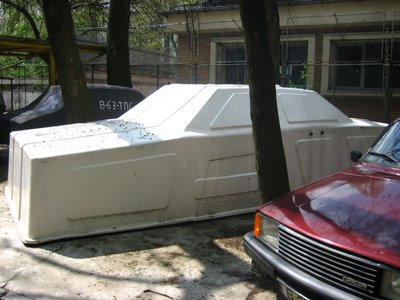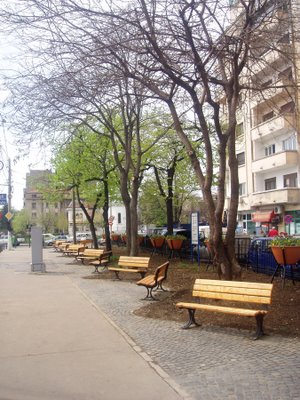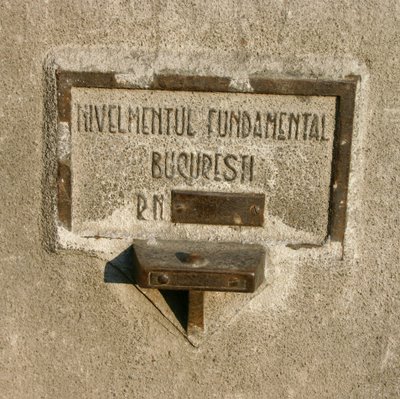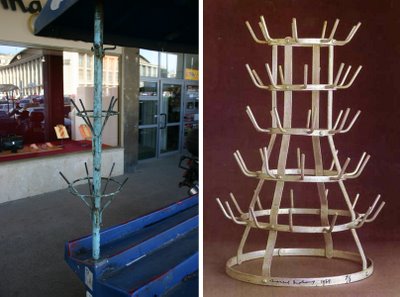hello bukresh. Vlad invited me to contribute this blog and will try to in the time i will stay here. and maybe also the users and visitors of this blog can support me. i am from hamburg and will stay until june in bucharest.
my working field is the documentary film and i really would like to make one about bucharest next year. To describe the topic still very comprehensive and not elaborated: the film should be about bucharests patchwork architecture, the search for an identity, the urban planning (if there is any, i´m not sure), using of public space and of course how inhabitants, artists, architects and authorities are dealing with it.
i have been here the first time in 1993 and was coming nearly every second year. what i noticed about all the changes until now is still fascinating and deterring me similary.
a lot of time in the last three weeks i spent on walking and driving through all different parts of the city. one thing i realized on these trips is maybe a fact that didn´t changed: to be a pedestrian in bucharest is still sometimes very dangerous and when you try to drive a car according to the traffic rules, you might not arrive anywhere. all the more this guy on the very first foto i made deeply impressed me, driving his wheelchair with a remarkable speed on the tram line through calea mosilor, that i even could not follow him with the camera.

there are some other things beside the traffic with which i always have to acclimate in the first time i circulate through the streets. of course i won´t tell you something new, there have been a lot of discussions about billboards, but in hamburg for example, extremly large billboards are only mounted on scaffolds in front of buildings which are under construction. and maybe all together in hamburg you find so much of them like there are here only at piata unirii. i had a chat with my neighbor at calea mosilor. the way he endures the fact that he has to turn on the lights in the flat the whole day and not at all in the evening seems a bit freaky for me. he didn´t care a lot about it, the best thing for him is, that he likes to sit on his balcony now more then before, because there is not so many dust anymore. ok, that might be a way to handle it.
the day later we both watched the entering of our new nice neighbor on the opposite side of the road. but the most remarkable thing for me was that i met two other people another day later and when they asked me where i live, i just told them there where the cola light woman lives and they immediatly know where it was. interesting sort of mental billboard mapping a city.

i started to map the city for me by visiting the different quarters to get a better overview of all the types of architecture. first of all i wanted to know where alle the people are living, who are driving all these huge offroad cars with toned windows, consuming 25 liters and using their mobile phone all the time but not to talk to somebody but rather to revile the other end of the line. i followed them to pipera and now i know better what kind of standards they are seeking.

i finished making photographes there after getting hardly admonished by some security guys explaining me, that my definition of public space had nothing in common with theirs. after another attempt of taking some pictures on the main road in pipera i decided better to go home, after the false estimation of the speed of an approaching big car, with of course toned windows. i thought i have had approximative two minutes time to cross the street, but....
i think most of this guys with the toned windows are responsible for all this blindwall buildings you can find everywhere in the city, being built without any relation to the environment. for me there are a synonym for what i always thought of bucharest: it will always be on the way to find its (urban) identity and will hardly ever achieve it.

maybe no other city in europe had to suffer so much large-scale changes of his urban character, without being destroyed by heavy war losses. and after the forced artifical identity in the socialist period now the city is strangled by a maximum profit-oriented planning- and building policy and i will not ask what is worse.
all these questions about a lack of identity and all the discussions and arguments about it should be the area of conflict in which i will try to work out a concept for this film.
in the meantime i am not getting tired to cruise all different parts of the city and bukresh is not going to abandon me. i always find something what i didn´t see anywhere else before, even if it´s not from great value, like this, spotted in drumul taberei. buna seara.


































